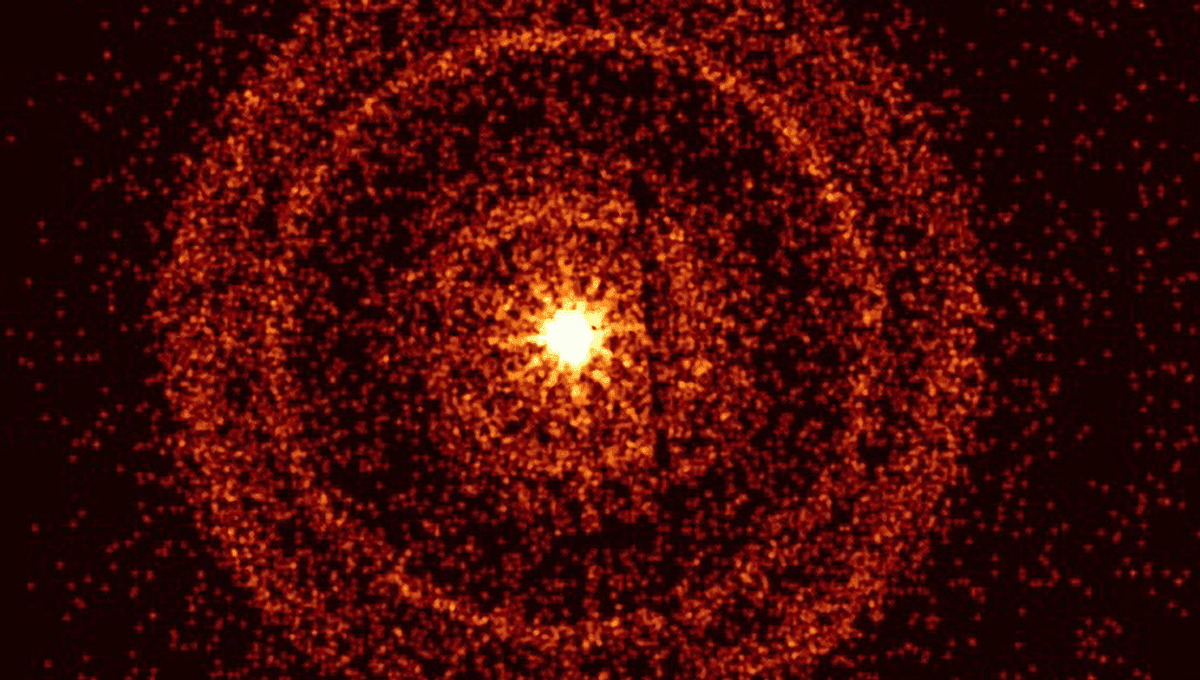
The Gamma Ray Burst (GRB) officially known as GRB 221009A was so powerful it was quickly dubbed the BOAT (Brightest of All Time). A new study reveals a reason why some of that brightness has been surprisingly enduring.
The BOAT did not just edge past previous records. Instead, it was 70 times as bright as anything we had seen before; briefly altering the Earth’s atmosphere from a distance of 2.4 billion light years. It saturated gamma ray sensors to the point where it took months of detective work even to establish how bright it actually was. Its afterglow continues to be brighter at all wavelengths than any other known GRB.
To release such astonishing amounts of energy almost inevitably requires multiple factors, and now a paper in Science Advances adds one more.
Like other longer Gamma Ray Bursts, GRB 221009A was caused by the birth of a black hole from the collapse of a very massive star. However, in a universe as big as ours, black holes are being born all the time, so it took more than that to make this one so exceptional.
One previously identified factor was its relative closeness, nearer to us than 97 percent of GRBs. Another is that, probably like all GRBs, it didn’t radiate evenly in all directions, instead producing a beam pointed directly at us. It may not be a comforting thought that events this powerful happen quite often but blast someone else instead, but there it is.
However, the new paper has identified a suspected additional factor: interaction with leftover material from the former star created a structured jet.
GRBs don’t last long – at five minutes the BOAT was also the longest we know – but they do produce afterglows that can reveal a lot about them. These are thought to be driven by jets of expelled material.
One puzzling thing about GRB 221009A was that no one could make out the edges of the jet.
“The slow fade of the afterglow is not characteristic of a narrow jet of gas, and knowing this made us suspect there was an additional reason for the intensity of the explosion, and our mathematical models have borne this out,” said Dr Hendrik Van Eerten of the University of Bath in a statement. “Our work clearly shows that the GRB had a unique structure, with observations gradually revealing a narrow jet embedded within a wider gas outflow where an isolated jet would normally be expected.”
Black holes initially contain only a portion of the mass of the former star, and the rest survives around them. “GRB jets need to go through the collapsing star in which they are formed,” said Van Eerten. “What we think made the difference in this case was the amount of mixing that happened between the stellar material and the jet, such that shock-heated gas kept appearing in our line of sight all the way up to the point that any characteristic jet signature would have been lost in the overall emission from the afterglow.”
Van Eerten noted that some previous bright GRBs also lacked a detectable jet signature. Yet their radiation must be focussed – we don’t think anything could produce the energy it would take to be this bright in all directions.
“An exceptional class of events appears to exist that are both extreme and manage to mask the directed nature of their gas flow,” Van Eerten said. The paper describes these as “structured jets launched by a common central engine”.
One prediction from this explanation is there should be some GRBs where we’re outside the beam of the initial outburst, but can still see what comes later. The authors propose a search for such “orphan” afterglows. Different models of jet structure produce widely varying predictions of how common these orphans should be.
That still leaves unanswered the question of why some GRBs do this and others do not. The authors think magnetic fields may be key, but more work is required.
“We think this is a once-in-a-thousand-year opportunity to address some of the most fundamental questions regarding these explosions, from the formation of black holes to tests of dark matter models,” Dr Brendan O’Connor of the University of Maryland and George Washington University added.
The paper is published in Science Advances.
Source Link: Brightest Explosion Ever Seen In Space Now Has An Explanation